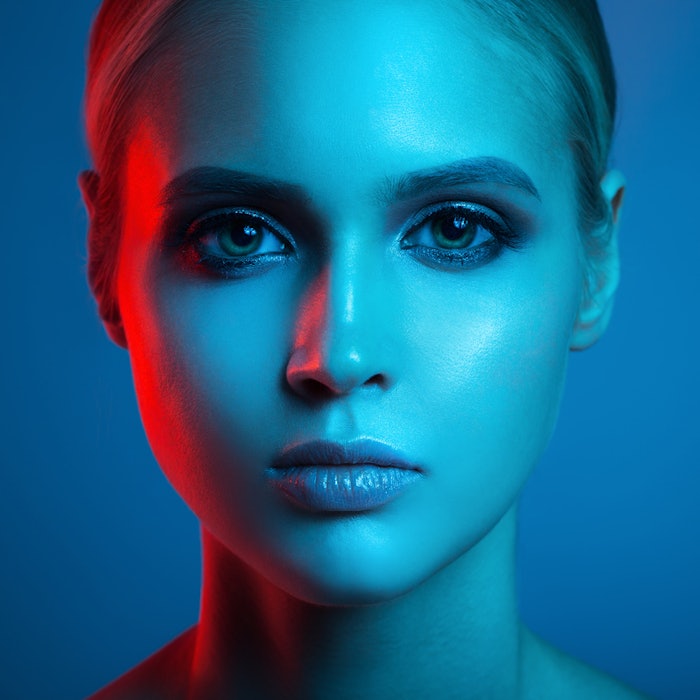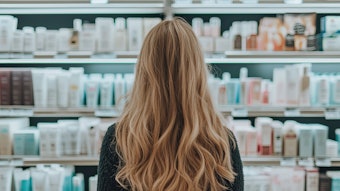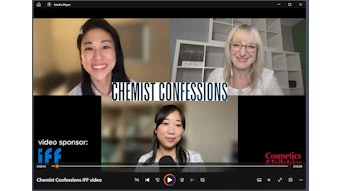
According to a study by Future Market Insights (FMI), the global market for blue light protection ingredients is expected to expand at an 8% CAGR through 2030. The study also found that demand for organic blue light protection products is creating space for new market entrants. With the expansion of research and demand, is blue light exposure truly a cause for concern? Further, is the creation of so many prevention ingredients warranted?
Blue Light Exposure
Interest in a solution to the effects of blue light has surged since 2019. A C&T article from 2021 explains how research on the topic intensified in cosmetics and R&D, detailing a research paper in which Gabriella Baki, Ph.D., director of cosmetic science, formulation design major at the University of Toledo, explains how "blue light protection is important, and in my opinion, we will see more ingredients and products — including moisturizers, sunscreens and even makeup products, with blue light protection claims in the near future."
A recent interview in the Nov./Dec. edition of C&T magazine with Nadine Pernodet, Ph.D., senior vice president, Biosciences, R&D, for The Estée Lauder Cos., discussed the significance of blue light and how it affects the skin. Pernodet stated: "In terms of blue light and light pollution, these have been well-studied in the medical field and are understood to disrupt our natural circadian rhythm." Pernodet further explains that this is because the skin believes it to be day time when absorbing artificial blue light.
A report published by Harvard University in July of 2020 also found that blue light suppresses melatonin twice as long as green light, causing skin damage. In order to block skin damage from blue light, researchers at the Anti-Pollution Research Center of Amorepacific R&D reportedly developed a clinical evaluation method for blocking blue light from reaching the skin. Their research details detrimental effects on the skin as well, including skin pigmentation and reductions in skin elasticity and moisture.
With the world averaging seven hours a day on computers and phones, blue light damage could be a more serious issue, as its effects are likely widespread, insinuating a need for what Baki predicted.
Blue Light Ingredients
As more research continues to emerge, many big players in the ingredients world have developed products that protect against blue light. A few developers and blue light prevention ingredients are listed below:
BASF
- DN-Aura (INCI: Maltodextrin (and) Lansium Domesticum Leaf Extract) is a natural active ingredient that diminishes pigmented spots by acting on miR-490-3p. This microRNA molecule controls the production of tyrosinase, shown by in silico, in vitro and in vivo studies.
- Neurobiox (INCI: Water (Aqua) (and) Butylene Glycol (and) Pentylene Glycol (and) Achillea Millefolium Extract (and) Xanthan Gum) is intended to stimulate cell renewal; since the epidermis decreases in thickness with age, the ingredient also works to increase skin thickness.
- Phytosoothe (INCI: Brassica Campestris Sterols (and) Cetearyl Alcohol) works to protect and restore both the skin’s physical and microbiotic barrier.
RAHN AG
- Celligent (INCI: Helianthus Annuus (Sunflower) Seed Oil (and) Ethyl Ferulate (and) Rosmarinus Officinalis (Rosemary) Leaf Extract (and) Tocopherol) has been shown to recalibrate the biorhythm of skin thanks to two powerful circadian-influencing antioxidants obtained from rice and rosemary.
- Myramaze (INCI: Propanediol (and) Water (Aqua) (and) Myrothamnus Flabellifolia Extract (and) Ascorbic Acid (and) Citric Acid) is designed to activate the sensory receptors of the skin and nose to relax the skin and mind and boost the user's mood, even at low concentrations.
- Proteolea (INCI: Glycerin (and) Water (aqua) (and) Levan (and) Decyl Glucoside (and) Olea Europaea (Olive) Leaf Extract (and) Phenethyl Alcohol (and) Zizyphus Jujuba Extract (and) Citric Acid (and) Ascorbic Acid) can be used as a cellular recycling manager, in addition to containing an anti-blue light formula for a six-year skin rejuvenation effect in four weeks.
Additionally, Alban Muller’s Cytokalmine ER (INCI: Maltitol (and) Punica Granatum Extract) is designed to reduce the general mechanism of inflammatory reaction and oxidative stress, serving as a solution for blue light damage; and Silab's Oxygeskin (INCI: Tropaeolum Majus Extract) fights damage induced in skin by blue light.
Effects of Blue Light
Aside from regular eyestrain, blue light can permanently damage vision, however this is only through constant exposure and age, per health.ucdavis.edu.
In terms of the skin, low exposure to high energy blue light can actually help, according to an article published by the journal of cosmetology. However, continued exposure can cause damage to the DNA and skin barrier, the death of cells and tissue and photoaging.
Further, when viewing screens on a daily basis for a significant amount of time, depth perception is lost. This raises significant concerns in general health and wellness, not to mention driving and outdoor activities. UCDavis suggests individuals seek a screen to real-world balance. Still, this may not always be feasible as people are enveloped in work that requires computer use, and it would not avoid blue light exposure altogether. Therefore, a reduction of the negative effects of blue light could be found in breaks from screen time (the 20-20-20 rule), blue light glasses or cosmetic products that serve to counteract or reduce symptoms of sustained blue light exposure.
Conclusion
Developers of blue light ingredients are creating products that will help mitigate the dangers of excessive blue light exposure. The health risks and symptoms may appear subtle, yet after an extended amount of time they can cause serious damage. Whether or not blue light ingredients are significantly helpful in reducing eye damage, circadian rhythm disruption and skin damage will require more research. There is, however, a need for them, and early findings of the benefits of these products is promising.












